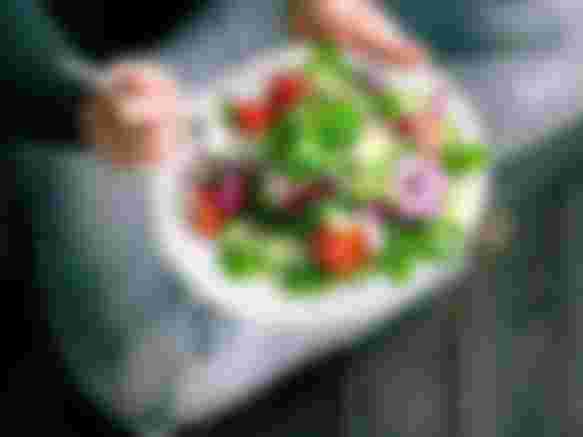By making these 5 lifestyle changes, you can lower

your blood pressure and reduce your risk of heart
disease.
If you've been diagnosed with high blood pressure,
you might be worried about taking medication to
bring your numbers down.
Lifestyle plays an important role in treating your
high blood pressure. If you successfully control your
blood pressure with a healthy lifestyle, you might
avoid, delay or reduce the need for medication.

1. Lose extra pounds and watch your waistlines
Blood pressure often increases as weight increases.
Being overweight also can cause disrupted breathing
while you sleep (sleep apnea), which further raises
your blood pressure.
Weight loss is one of the most effective lifestyle
changes for controlling blood pressure. Losing
even a small amount of weight if you're overweight
or obese can help reduce your blood pressure. In
general, you may reduce your blood pressure by
about 1 millimeter of mercury (mm Hg) with each
kilogram (about 2.2 pounds) of weight you lose.
Besides shedding pounds, you generally should also
keep an eye on your waistline. Carrying too much
weight around your waist can put you at greater risk
of high blood pressure.
In general
Men are at risk if their waist measurement is greater
than 40 inches (102 centimeters).
Women are at risk if their waist measurement is
greater than 35 inches (89 centimeters).
These numbers vary among ethnic groups. Ask your
doctor about a healthy waist measurement for you.

2. Exercise regularly
Regular physical activity such as 150 minutes a
week, or about 30 minutes most days of the week -
can lower your blood pressure by about 5 to 8 mm
Hg if you have high blood pressure. It's important to
be consistent because if you stop exercising, your
blood pressure can rise again.
If you have elevated blood pressure, exercise can
help you avoid developing hypertension. If you
already have hypertension, regular physical activity
can bring your blood pressure down to safer levels.
Some examples of aerobic exercise you may try
to lower blood pressure include walking, jogging,
cycling, swimming or dancing. You can also try
high-intensity interval training, which involves
alternating short bursts of intense activity with
subsequent recovery periods of lighter activity.
Strength training also can help reduce blood
pressure. Aim to include strength training exercises
at least two days a week. Talk to your doctor about
developing an exercise program.

3. Eat a healthy diet:
Eating a diet that is rich in whole grains, fruits,
vegetables and low-fat dairy products and skimps on
saturated fat and cholesterol can lower your blood
pressure by up to 11 mm Hg if you have high blood
pressure. This eating plan is known as the Dietary
Approaches to Stop Hypertension (DASH) diet.
It isn't easy to change your eating habits, but with
these tips, you can adopt a healthy diet:
It isn't easy to change your eating habits, but with
these tips, you can adopt a healthy diet:
Keep a food diary. Writing down what you eat, even
for just a week, can shed surprising light on your true
eating habits. Monitor what you eat, how much, when
and why.
Consider boosting potassium. Potassium can lessen
the effects of sodium on blood pressure. The best
source of potassium is food, such as fruits and
vegetables, rather than supplements. Talk to your
doctor about the potassium level that's best for you.
Be a smart shopper. Read food labels when you shoop
and stick to your healthy-eating plan when you're
dining out, too.

4. Reduce sodium in your diet
Even a small reduction in the sodium in your diet can
improve your heart health and reduce blood pressure
by about 5 to 6 mm Hg if you have high blood
pressure.
The effect of sodium intake on blood pressure varies
among groups of people. In general, limit sodiumn
to 2,300 milligrams (mg) a day or less. However, a
lower sodium intake - 1,500 mg a day or less- is
ideal for most adults.
To decrease sodium in your diet, consider these tips:
Read food labels. If possible, choose low-sodium
Read food labels. If possible, choose low-sodium
alternatives of the foods and beverages you normally
buy.
Eat fewer processed foods. Only a small amount of
sodium occurs naturally in foods. Most sodium is
added during processing.
Don't add salt. Just 1 level teaspoon of salt has
2,300 mg of sodium. Use herbs or spices to add
flavor to your food.
Ease into it. If you don't feel you can drastically
reduce the sodium in your diet suddenly, cut back
gradually. Your palate will adjust over time.

5.Quit Smoking:
Each cigarette you smoke increases your blood
pressure for many minutes after you finish. Stopping
smoking helps your blood pressure return to normal.
Quitting smoking can reduce your risk of heart
disease and improve your overall health. People who
quit smoking may live longer than people who never
quit smoking





